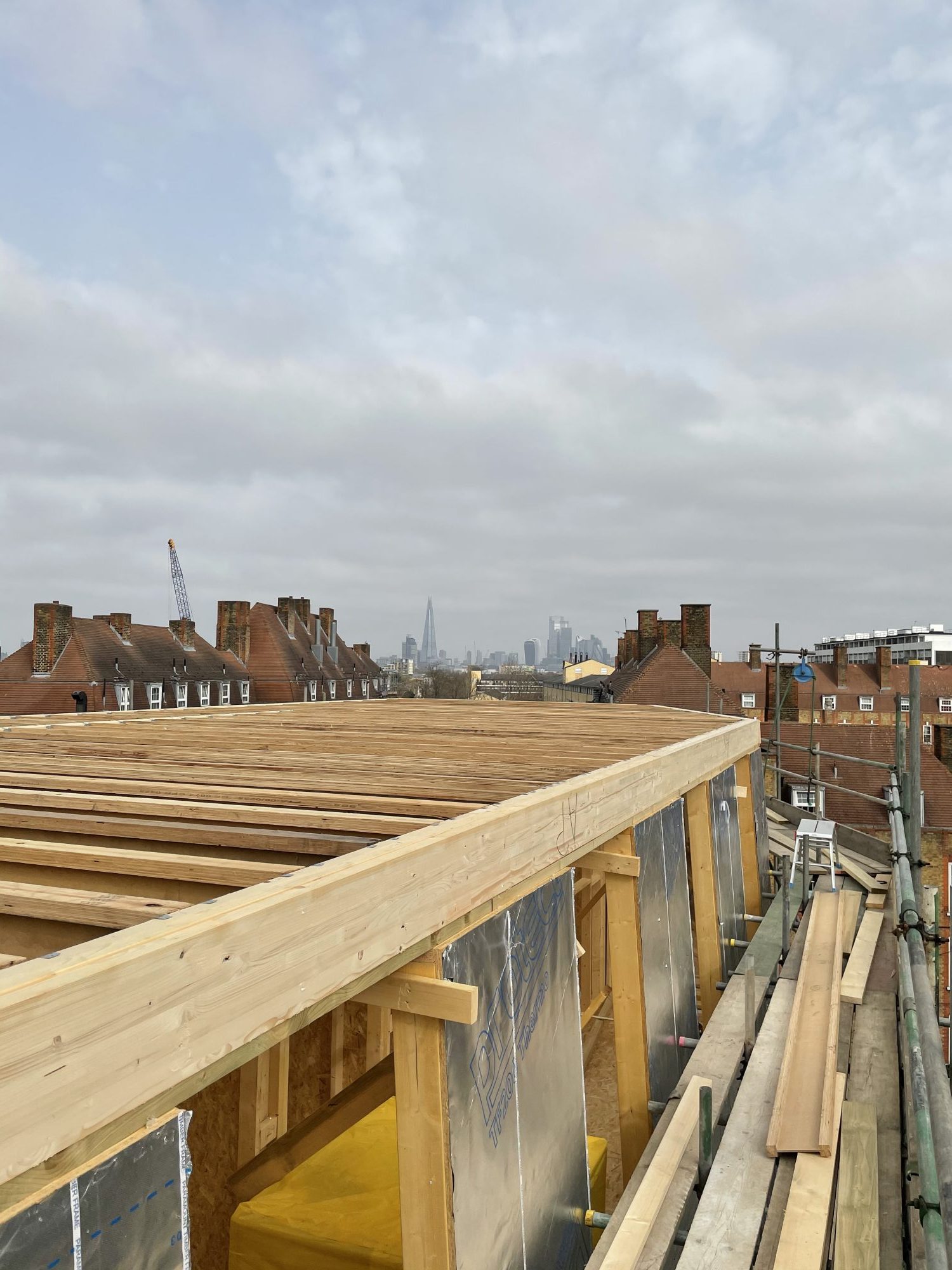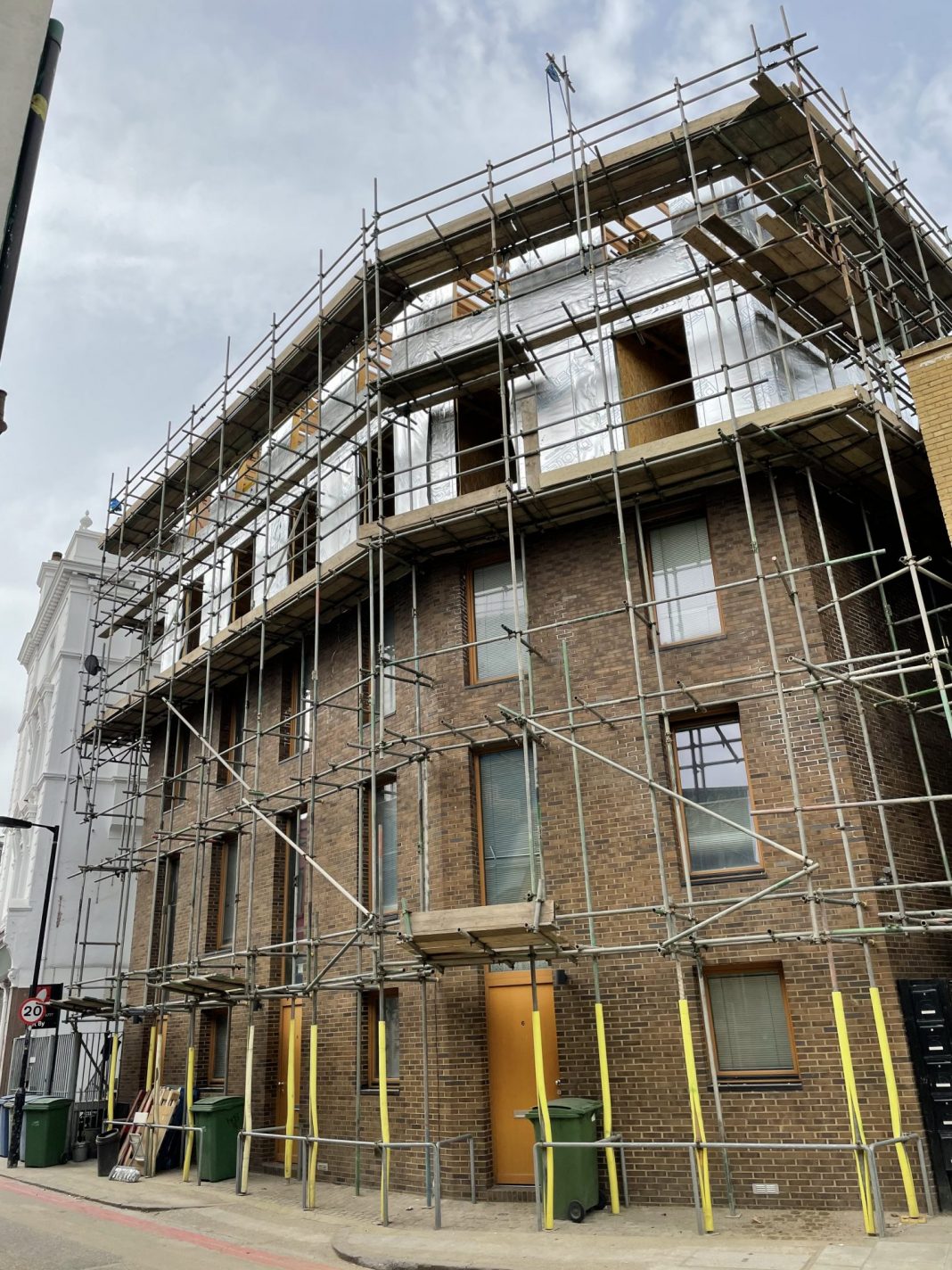As the housing crisis continues to grow in the UK, now more than ever a solution is needed. Paramount Timber explains the benefits of timber airspace developments, and why MMC can help to solve the problem
The UK has a serious shortage of housing. According to Sadiq Khan, 66,000 homes are needed each year for the next decade in the capital alone. But this need is not being met – not by a long stretch.
Big changes are required if the ongoing UK housing crisis is to be overcome. New and advanced modern methods of construction (MMC) can make a big difference, and airspace developments, in particular, can form a significant part of this effort.
What is airspace development?
Defined simply, airspace development is the process of building up rather than building out. Units are constructed on top of existing properties – be it residential, commercial, or retail.
The potential of this method? Approximately, there is space for 180,000 new homes in London alone. That figure represents 42% of the need identified by the London Plan. This means that harnessing airspace development can represent almost half the battle.
How feasible is it to employ airspace development?
On 1 August 2020, the new Permitted Development Right (PDR) came into effect. This permission enables property owners and freeholders to extend upward by two storeys without the need for any planning permission.
The many benefits of airspace developments
It’s easy to see how airspace development could assumedly be synonymous with just building expensive penthouses. But the potential is so much vaster – and valuable. For local authorities, one of the major benefits of airspace development is its suitability for developing affordable housing.
And as well as airspace developments going a long way to helping to meet the shortfall in new housing, they can also address issues arising from high-density living, not to mention efficient reuse and adaption of existing structures.
Airspace development is particularly well-suited for local authorities as they hold extensive existing housing stock. The value of the airspace above all these rooftops is immense. And with the PDR, it’s opportunity upon opportunity just waiting to be developed.
The minimal disruption from MMC
New airspace units can be built using MMC – off-site and modular construction. This means development can be carried out with minimum disruption – to residents of the current building and anyone living or working in the vicinity.
With modular, not only can 95% of the construction be completed off-site for minimum upheaval, but this method is also ideal for addressing delivery shortages and improving efficiency.
Done right, the result can be precision-engineered affordable homes available in already-made communities with infrastructures such as schools, hospitals and transport links already established.
Why timber construction is perfect for airspace developments
Timber is lightweight, versatile, flexible, and it offers numerous environmental benefits as well. For airspace extensions and MMC in general, it’s the perfect material.
At Paramount, we’re at the forefront of MMC and already have varied experience providing timber frame and engineering for numerous modern projects embracing airspace development.

What to consider when looking at an airspace development or opportunity
Due to the nature of their environments and ability to take heavier loads, commercial buildings are typically well-suited for the airspace development of two or more storeys. This is especially the case when lightweight structural material such as timber can be used.
Plus, due to the ability to use more lightweight and flexible materials for airspace development, the private residential sector and the affordable housing sector are already benefiting from an increase in the number of airspace schemes too.
The exciting advances with MMC and particularly the advent of airspace developments, mean the shortfall in housing can be innovatively addressed, properties become more valuable, and less land needs to be unlocked for housing.

















